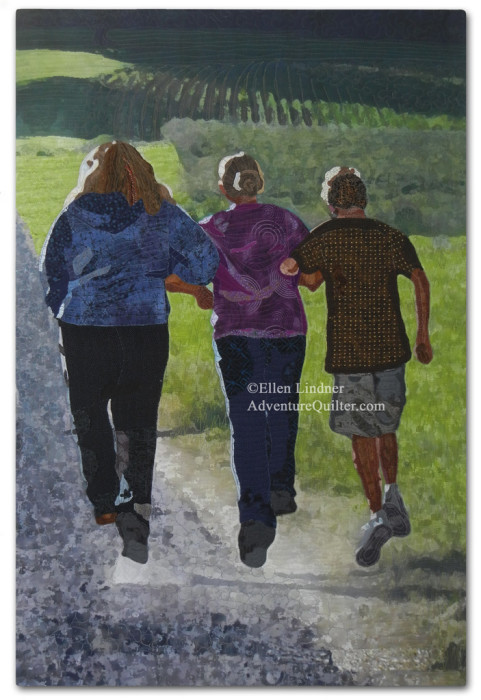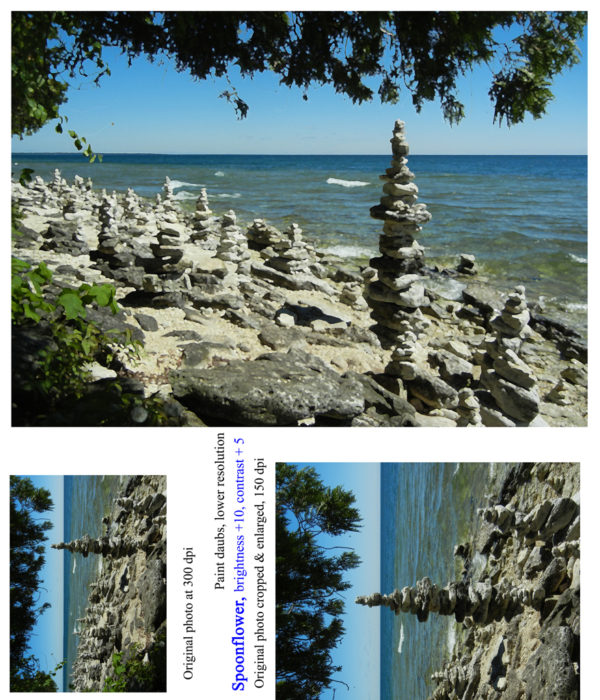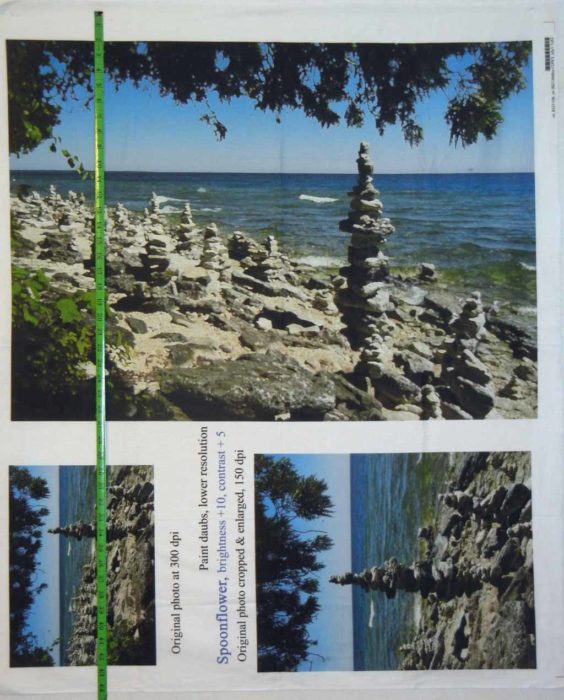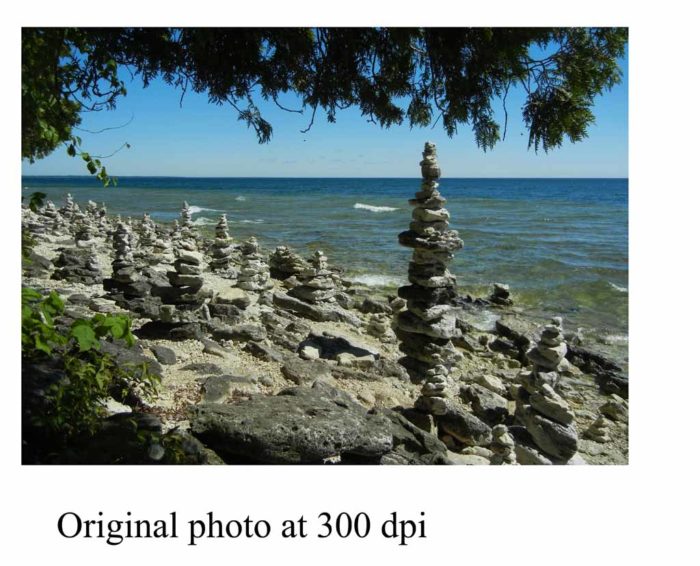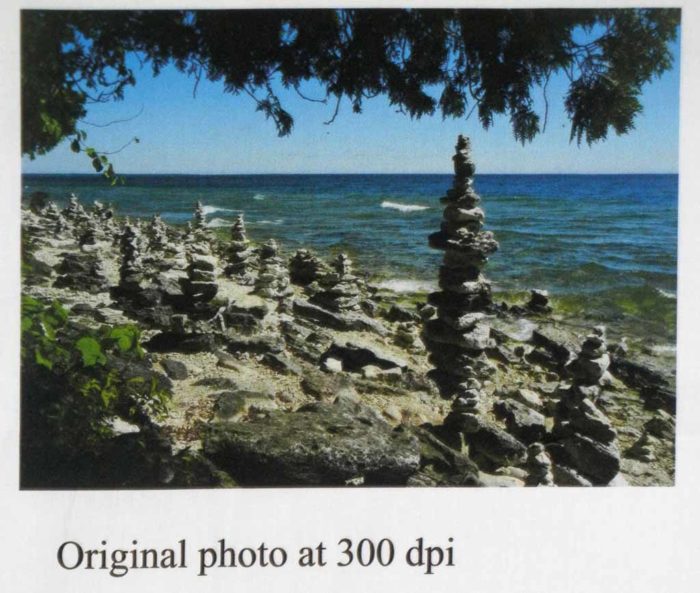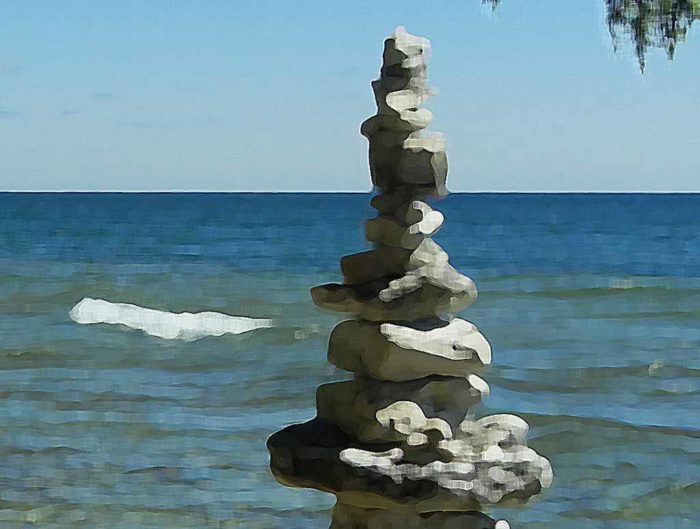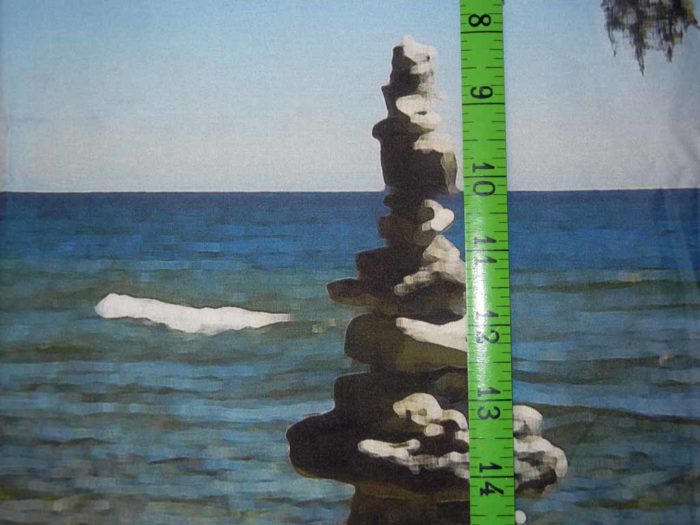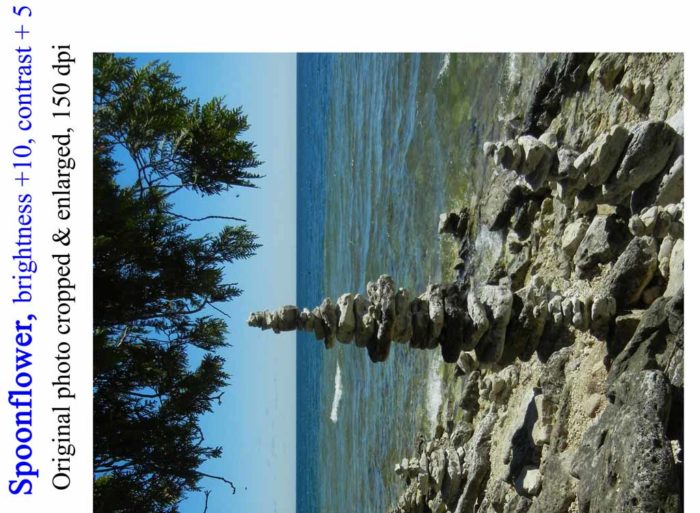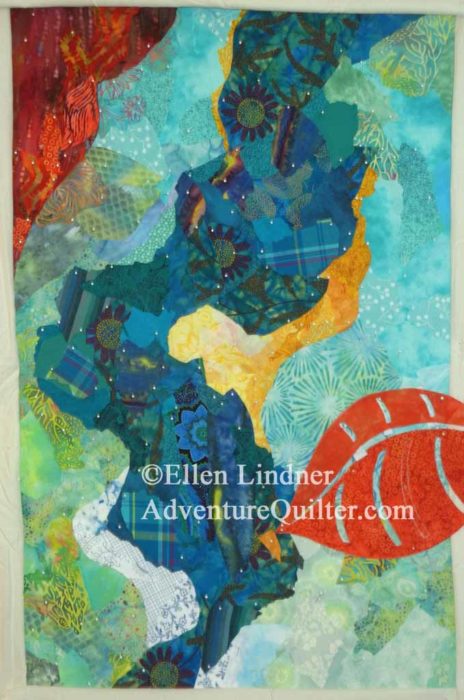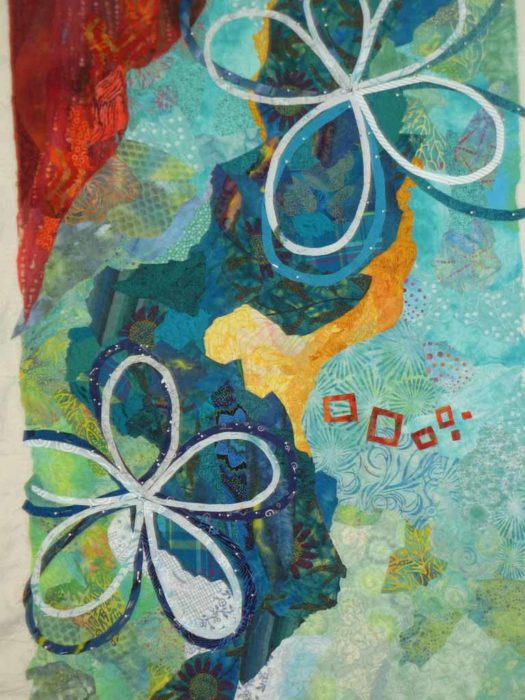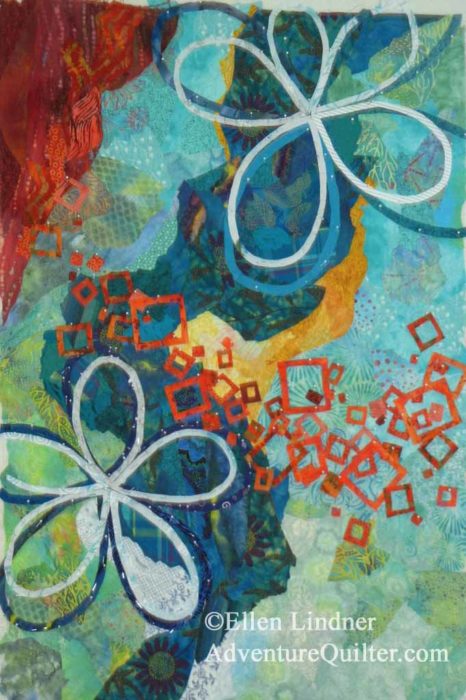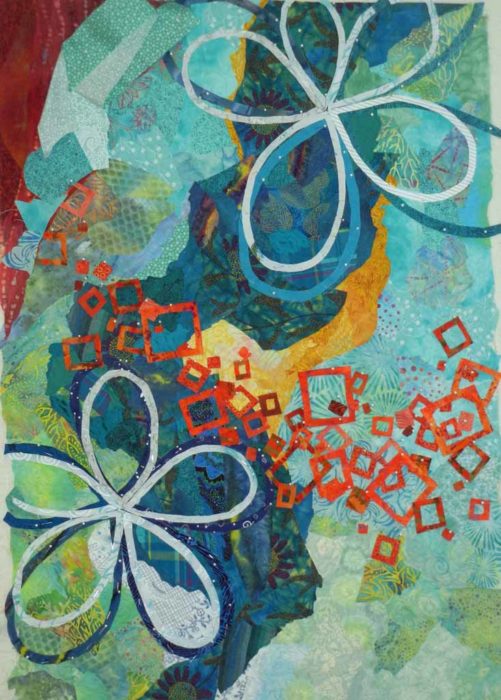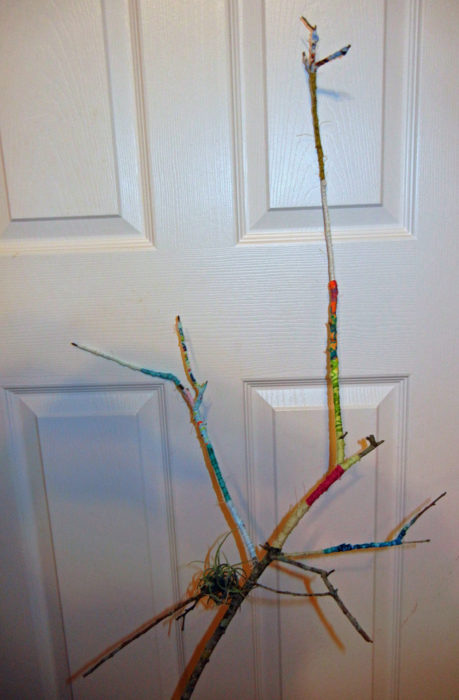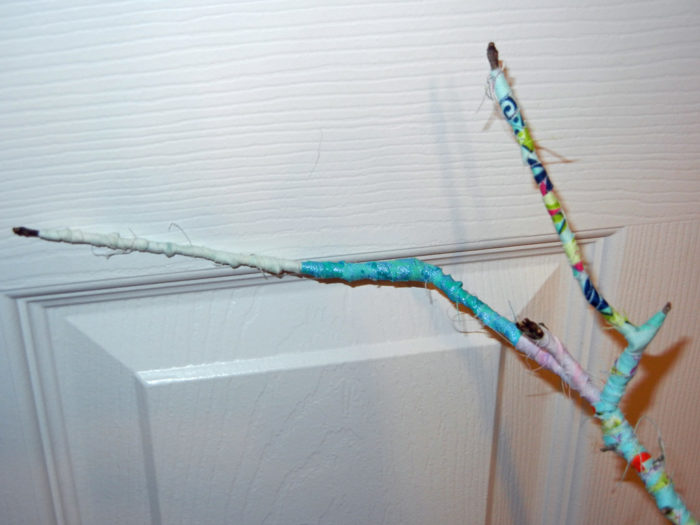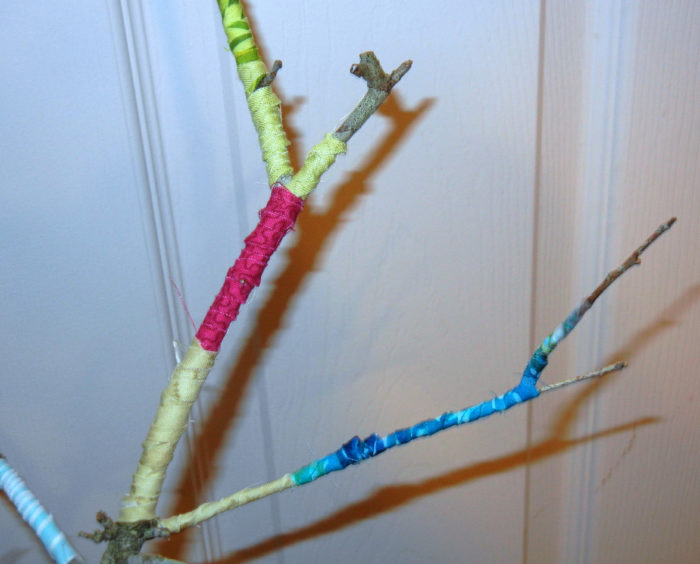Back in October, I wrote about creating torn paper collages in order to loosen up and to work more abstractly. Like this:
Original photo
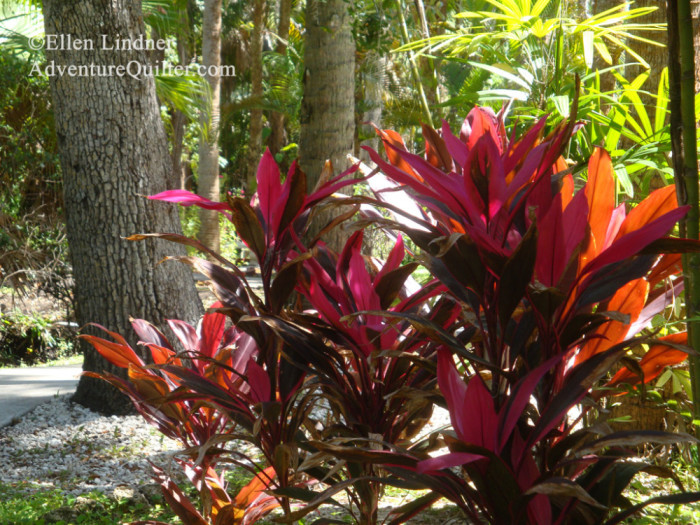
Torn paper collage
Because the paper is torn, you can’t be too accurate, so you
HAVE to focus on the largest shapes.
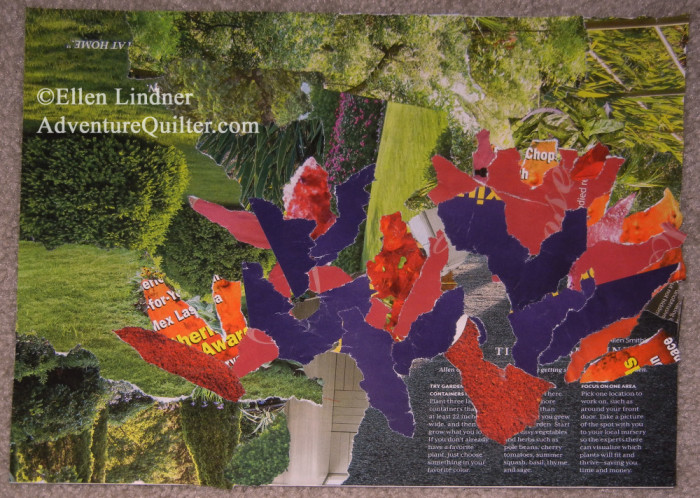
The fabric interpretation, Ti Party.
 One of my readers, Suzanne Sanger, decided to give it a try and was kind enough to share her results with me (and with you.)
One of my readers, Suzanne Sanger, decided to give it a try and was kind enough to share her results with me (and with you.)
Her original photo, taken in Bermuda
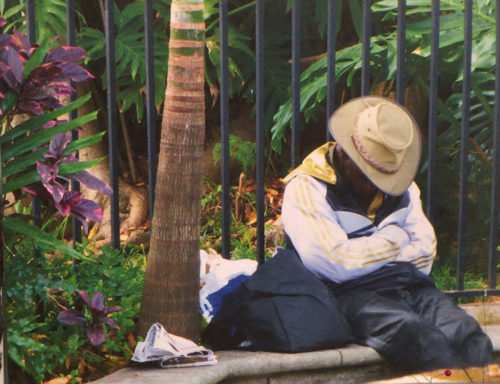
The paper collage, with part of the original photo overlapping.
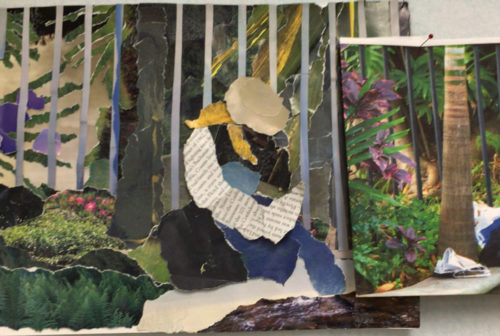
And, her final quilt, called Dozing in Bermuda.
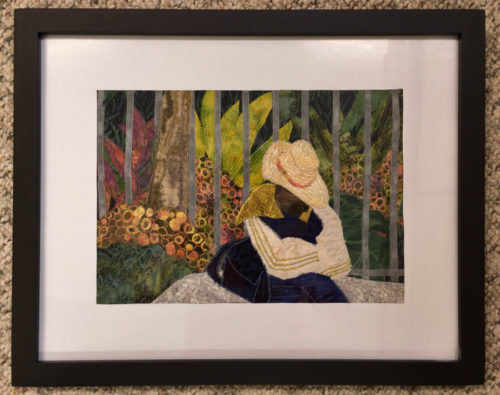
I think it’s great. And don’t you love the way she’s matted and framed it?
Suzanne says, “I want to thank you for inspiring me! Like you, I’ve been challenging myself to work more abstractly, and have dabbled with a range from just barely to totally non representational. Your blog post from last October about torn paper collage sent me right into the studio to tear up the only magazine I had in order to recreate a photo I took in Bermuda a few years ago. Then I did my semi-annual house switch, life intervened, I took a great abstraction class from Lisa Call, all the while leaving my torn paper start hanging on my design wall. Now I’ve switched back to my summer house, and needed a project to get myself back into the studio. Ah hah! It was time to return to my dozing man. He’s a bit more realistic than I would like, but still a move in the right direction. I LOVE this process! Hmmm. I guess I’ll have to subscribe to an image heavy magazine again, pain though that is what with changing mailing addresses twice a year. LOL. Anyway, thanks for a great idea! You always give me new things to think about.”
I love this! So much so that it makes me want to reach for my magazines again, too. It’s a FUN way to work!
Ellen Lindner

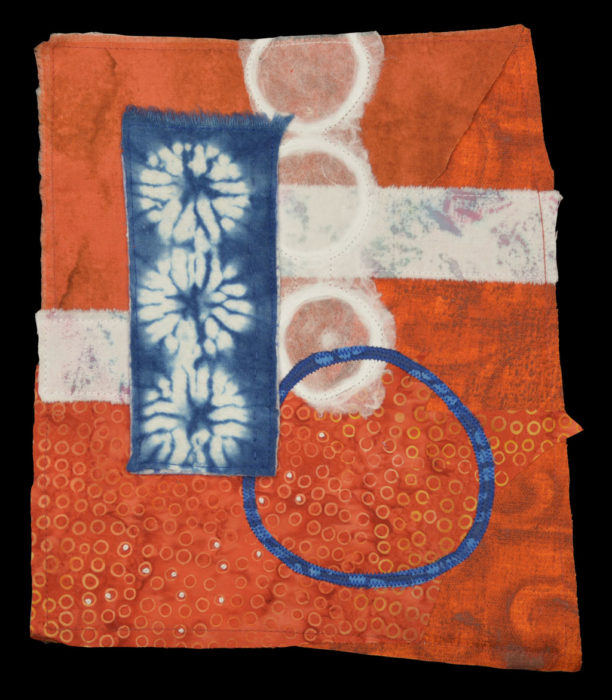
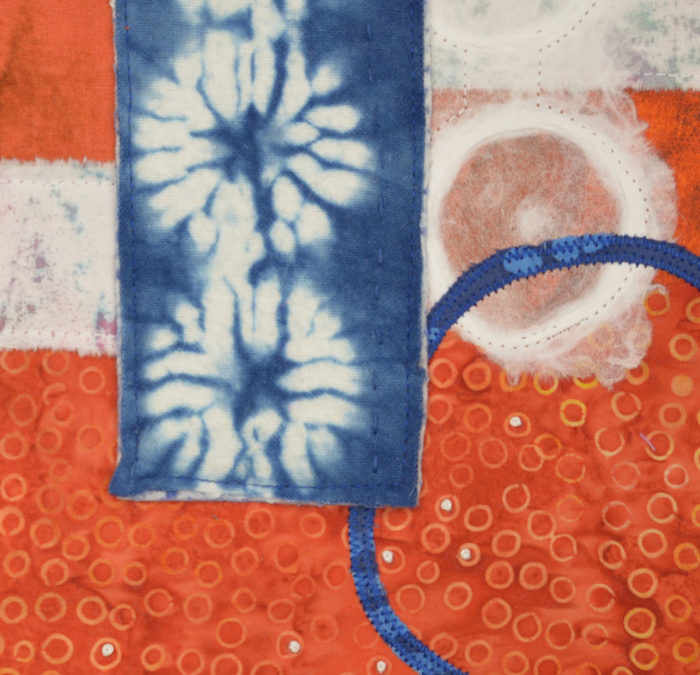

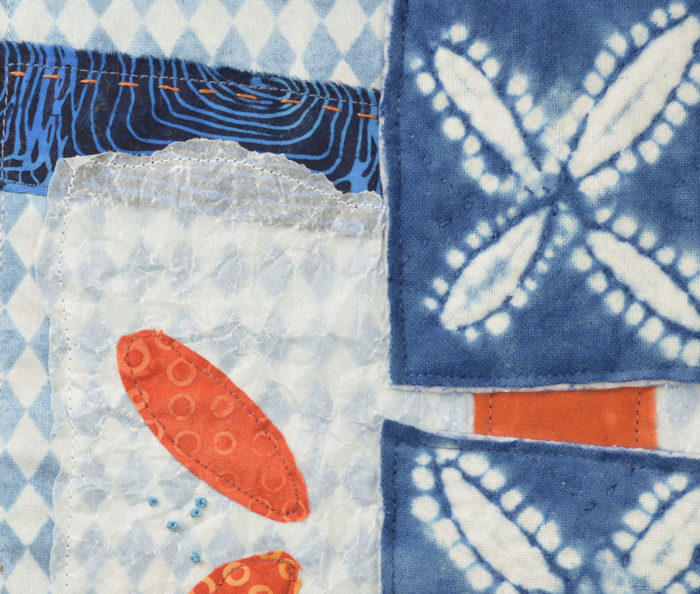

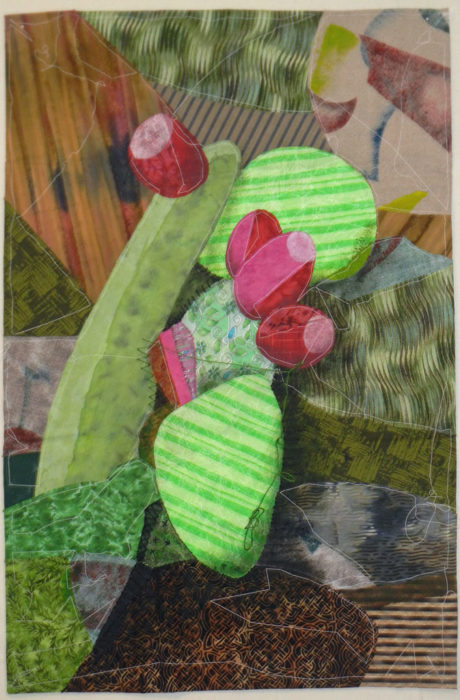
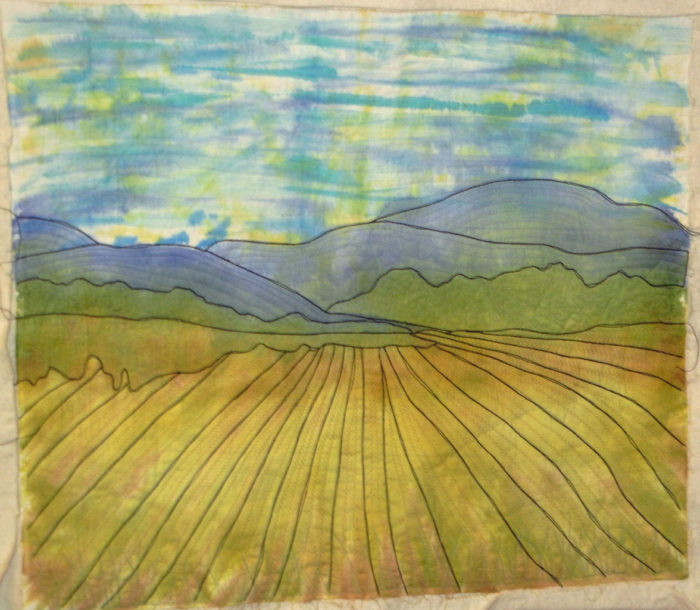



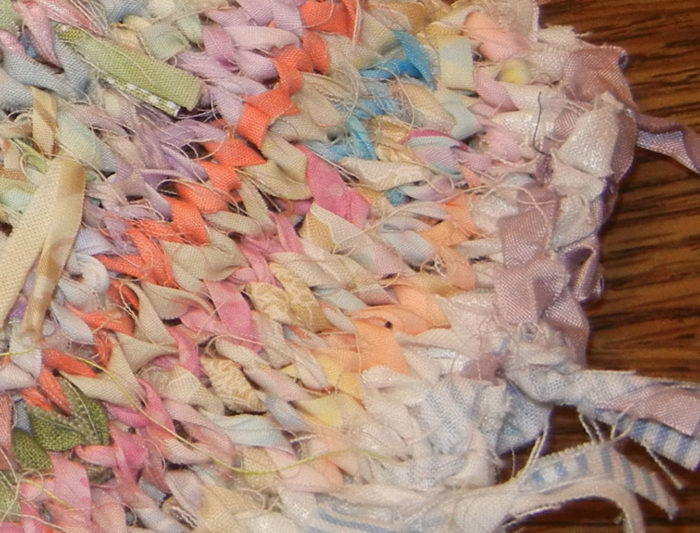
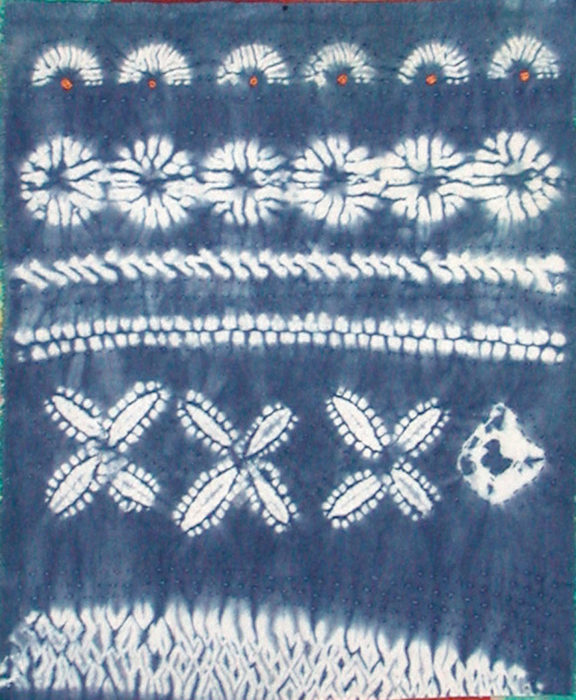
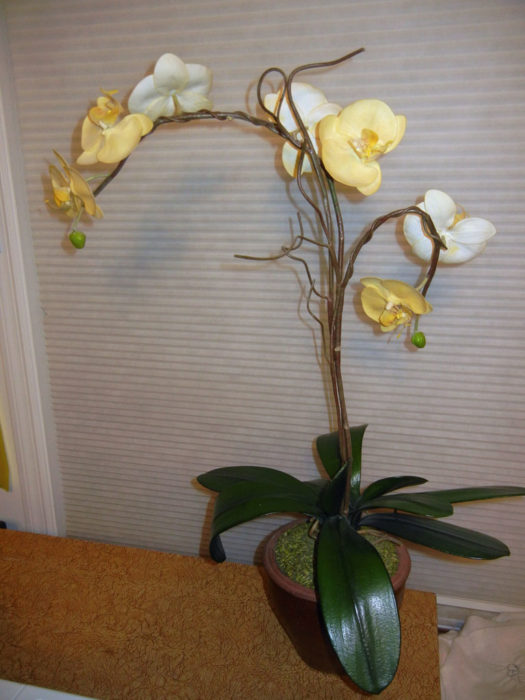


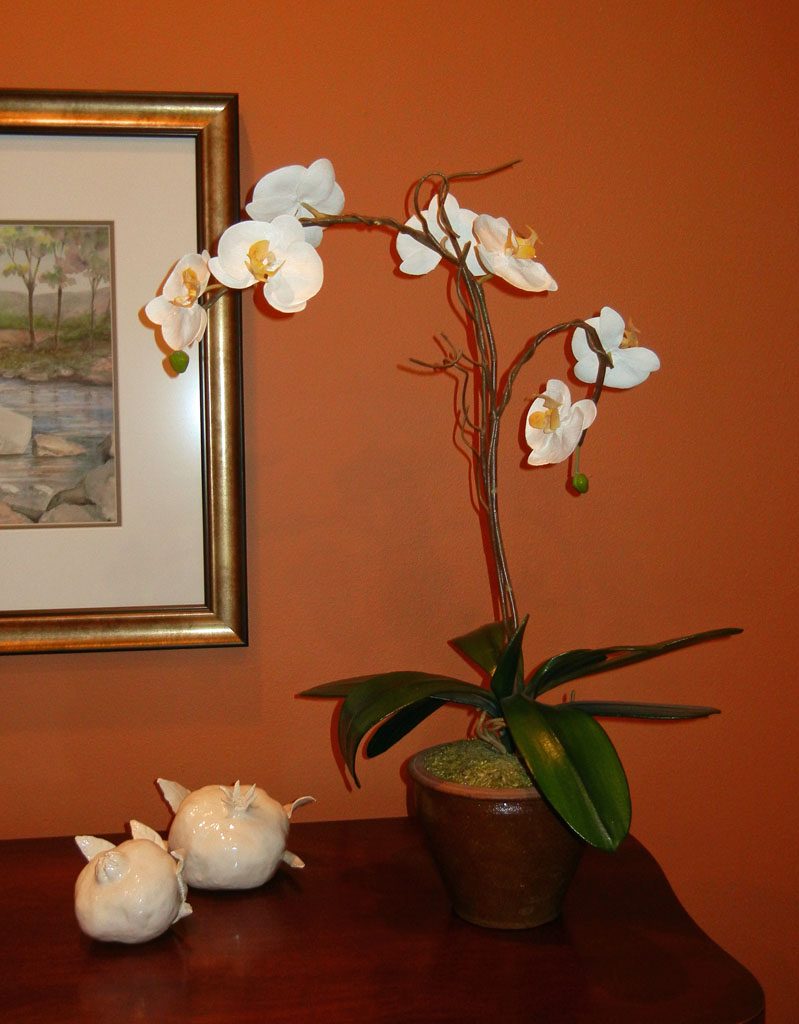


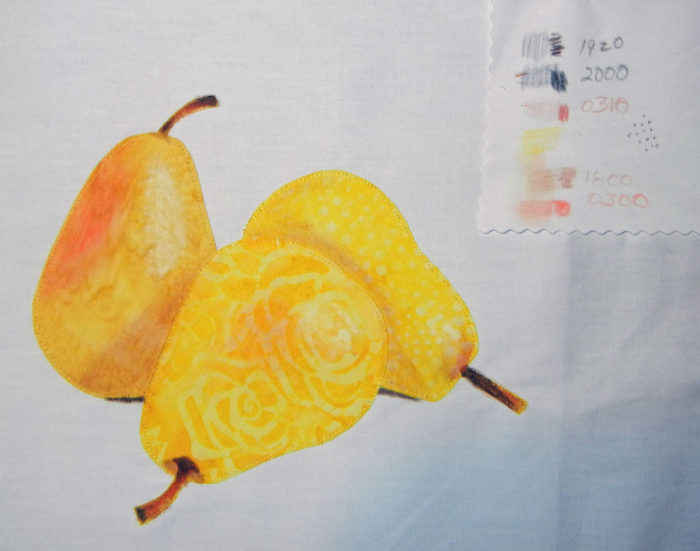
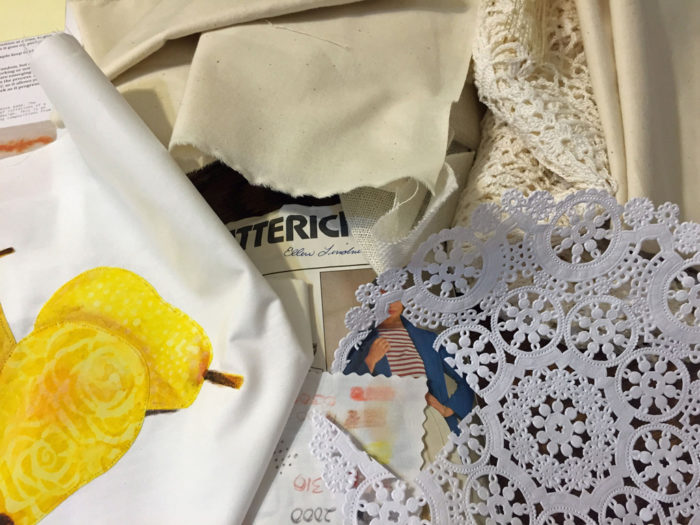

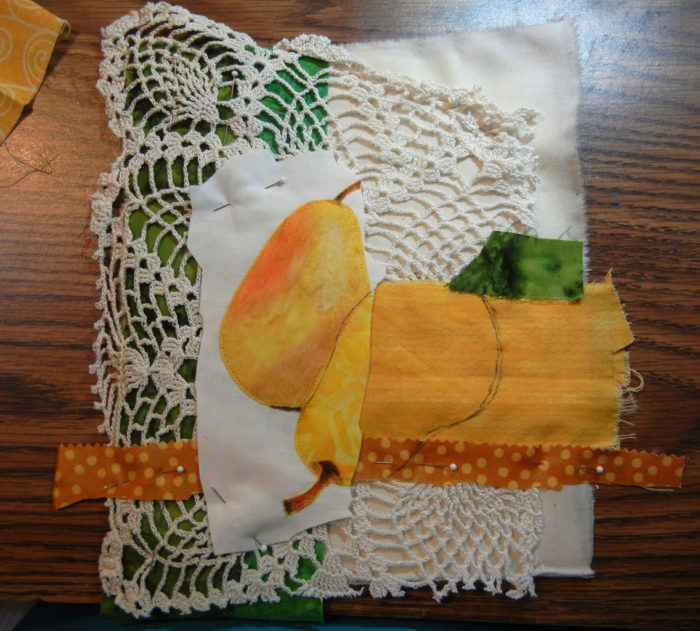


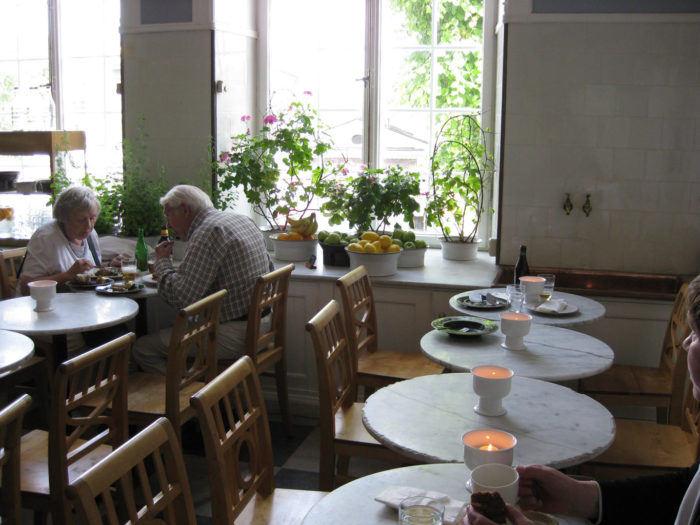 Photo credit: Martha Wolfe
Photo credit: Martha Wolfe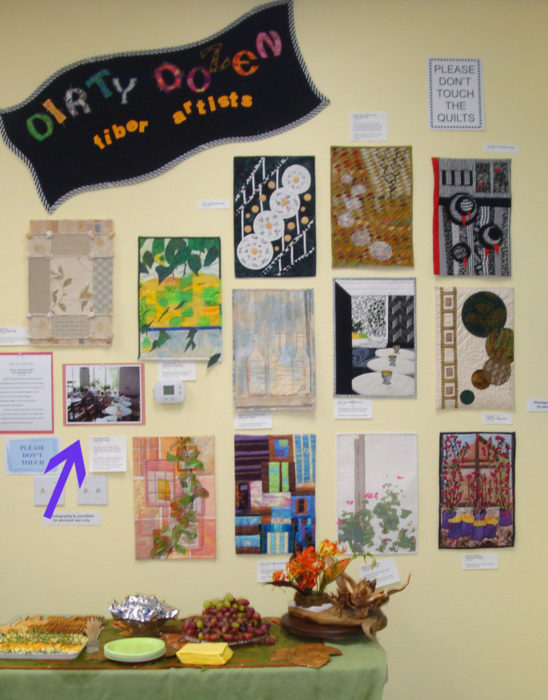
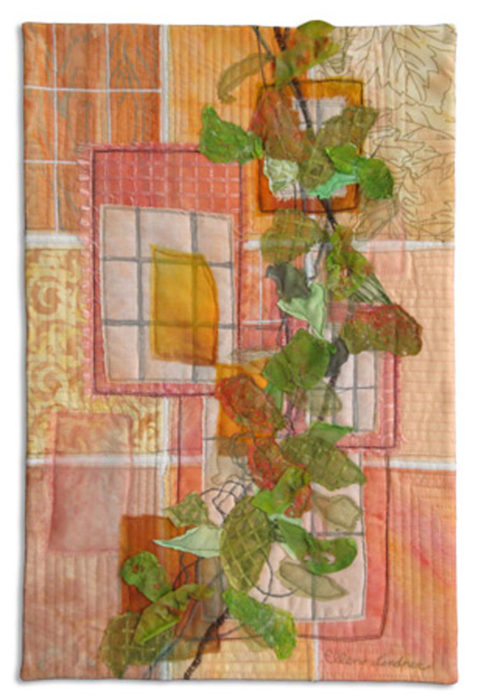 I never really cared for this quilt, I think maybe because of the color combination. Whenever I’m disappointed with a quilt I like to examine it and think about what worked and what didn’t. These are some things I think I did well:
I never really cared for this quilt, I think maybe because of the color combination. Whenever I’m disappointed with a quilt I like to examine it and think about what worked and what didn’t. These are some things I think I did well:


